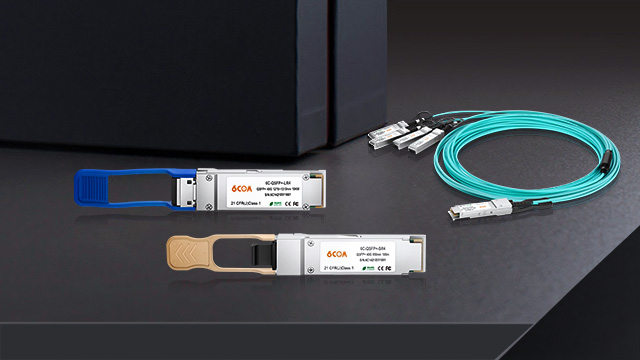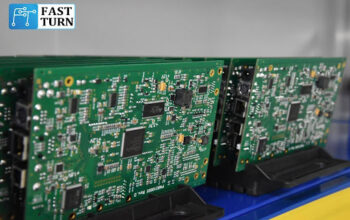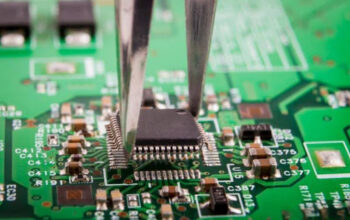
As data traffic continues to surge due to the rise of cloud computing, artificial intelligence, and big data analytics, data centers must continually upgrade their network infrastructure to keep pace. For many years, 10G Ethernet has been the foundation of data center connectivity, providing reliable performance for a wide range of applications. However, with the growing demand for faster data processing and transmission, 40G Ethernet has become the new standard for high-performance networking. The challenge lies in how to migrate efficiently from 10G to 40G without completely overhauling existing infrastructure. This is where the 40GBASE-PSM4 QSFP+ transceiver comes into play. With its balance of high performance, cost efficiency, and compatibility, 40G PSM4 offers a practical path for data centers seeking a smooth transition to higher speeds.
Understanding 40G PSM4 Technology
The 40GBASE-PSM4 QSFP+ optical transceiver is based on the Parallel Single Mode 4-lane standard, which transmits and receives data using four parallel channels over single-mode fiber. Each channel carries 10 Gbps, combining to deliver an aggregated bandwidth of 40 Gbps. Operating at a wavelength of 1310 nm, PSM4 modules typically support transmission distances of up to 10 kilometers. They use an MTP/MPO-12 connector interface, which enables compact and efficient connections.
Unlike solutions such as 40GBASE-SR4, which rely on multimode fibers for short-range transmission, or 40GBASE-LR4, which uses wavelength-division multiplexing to achieve long distances, PSM4 simplifies the design by transmitting four identical 10G optical signals in parallel over single-mode fibers. This parallel transmission method provides high bandwidth and long reach while maintaining a straightforward and cost-effective optical structure.
Compatibility with Existing 10G Infrastructure
One of the greatest strengths of 40G PSM4 lies in its compatibility with existing 10G network designs. Many data centers built their 10G architecture using single-mode fibers for long-distance connectivity. Because PSM4 also uses single-mode fiber, it can often be deployed without replacing the existing cabling infrastructure. This compatibility minimizes the need for large-scale re-cabling projects and allows for a phased migration approach.
In addition, 40G PSM4 links can be configured in a breakout mode, where a single 40G connection can be divided into four 10G links. This means data centers can continue using their existing 10G devices while gradually introducing 40G systems. Such flexibility enables incremental upgrades, reducing operational risks and helping organizations manage costs more effectively during the transition phase.
Simplified Cabling and Deployment
Migrating from 10G to 40G often presents cabling challenges, especially in high-density environments. Traditional multimode solutions require careful consideration of fiber polarity, connector types, and link budgets. PSM4 simplifies this process through its use of single-mode parallel transmission, which offers lower signal loss and longer reach. The adoption of MTP/MPO connectors also streamlines cable management by consolidating multiple fibers into a single compact interface.
This simplification not only reduces installation time but also enhances system reliability. With fewer cables and connectors to manage, the risk of physical connection errors decreases significantly. Technicians can easily install and maintain the network without complex reconfiguration or frequent cable replacements. For large-scale data centers, where hundreds or thousands of connections are deployed, this simplicity translates into considerable time and cost savings.
Cost Efficiency Compared with Other 40G Solutions
While performance and reliability are essential, cost remains a decisive factor in network upgrades. The 40GBASE-PSM4 QSFP+ module provides a cost-effective alternative to other 40G solutions. Compared with 40GBASE-LR4 modules that use wavelength multiplexing, PSM4 transceivers have a simpler optical design and lower component costs. They also use standard single-mode fibers, which are generally more affordable and widely available than high-grade multimode fibers.
Although 40GBASE-SR4 modules are cheaper in short-reach applications, they are limited by distance and unsuitable for long connections between racks or buildings. PSM4 bridges this gap by offering both cost efficiency and long-distance performance. This makes it particularly suitable for data center interconnects or connections across large campuses. The overall reduction in both equipment and cabling expenses allows organizations to upgrade their networks more economically without compromising on performance or reliability.
Reliable Performance and Energy Efficiency
In addition to cost advantages, the 40G PSM4 transceiver delivers stable and reliable performance over extended distances. Operating at a wavelength of 1310 nm, it experiences minimal signal attenuation and interference, ensuring consistent data transmission even across long spans. This makes it ideal for inter-rack, inter-building, and even metro-area connections where stability is paramount.
The QSFP+ form factor also contributes to energy efficiency. Each module typically consumes less than 3.5 watts, significantly reducing power usage compared to earlier high-speed transceivers. In large-scale facilities with thousands of optical ports, this energy efficiency can translate into substantial operational savings and lower cooling requirements. As data centers pursue greener and more sustainable operations, deploying energy-efficient transceivers like the 40G PSM4 aligns with environmental and economic goals alike.
Scalability and Future-Proof Design
The migration to 40G is often seen as a stepping stone toward 100G and higher-speed networking. One of the long-term benefits of 40G PSM4 is that its cabling structure is inherently compatible with next-generation architectures. Both 100G and 400G technologies adopt multi-lane transmission approaches, meaning that the MTP/MPO cabling deployed for PSM4 can be reused for future upgrades. This continuity ensures that investments made today will continue to provide value as data centers evolve.
By adopting PSM4 now, data center operators can lay a strong foundation for the next phase of network evolution. The modular and scalable nature of the technology ensures that future upgrades can be implemented with minimal disruption. Instead of rebuilding the entire cabling infrastructure, organizations can simply replace transceivers as higher-speed standards become available.
Real-World Applications
In practical terms, 40G PSM4 is widely used in modern data center environments where high performance and long reach are essential. It serves effectively in inter-rack connections, aggregation layers, and data center interconnect links spanning up to 10 kilometers. Enterprises with multiple data halls or distributed facilities often rely on PSM4 to maintain high-speed communication between core switches. The technology is also valuable in campus networks that require stable connections between distribution and core nodes. Because of its flexibility and cost-effectiveness, PSM4 has become a popular choice for organizations planning gradual upgrades from 10G to 40G without operational interruptions.
Conclusion
As data demands continue to grow, upgrading from 10G to 40G has become a necessity for data centers striving to maintain high-speed, reliable, and scalable operations. Yet this migration can be complex and costly if not properly planned. The 40GBASE-PSM4 QSFP+ transceiver provides a clear and efficient solution by combining high performance, simplicity, and affordability. Its single-mode parallel transmission enables seamless integration with existing 10G infrastructure, reduces cabling complexity, and supports long-distance communication with low power consumption.
Moreover, by aligning with the architectural principles of future high-speed standards, PSM4 offers a forward-looking solution that protects current investments and simplifies future upgrades. For data centers aiming to modernize their networks efficiently and sustainably, 40G PSM4 represents not just a transitional technology but a strategic step toward the next generation of high-performance networking.
please follow us on Vibe Linker.


